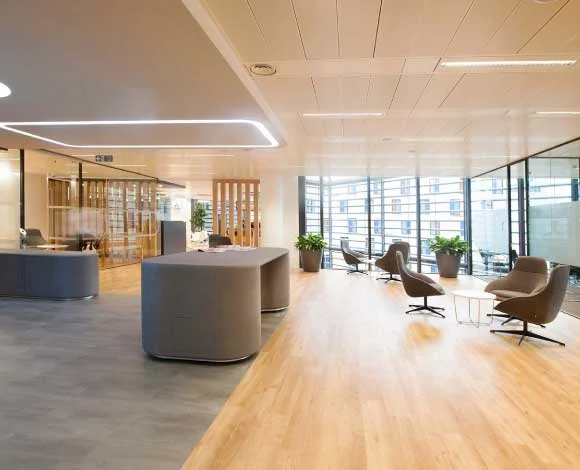Dubai has long been recognized as a global hub of luxury, innovation, and architectural grandeur. This forward-thinking mindset is reflected not only in its skyline but also within its commercial interiors. Businesses across the UAE’s most vibrant city are investing in cutting-edge design to enhance customer experience, employee productivity, and brand identity. Commercial interior design in Dubai is not just about aesthetics—it’s about strategy, culture, and functionality.
What is Commercial Interior Design?
Commercial interior design refers to the planning and designing of interior spaces used for business purposes. These spaces include offices, retail stores, restaurants, hotels, healthcare facilities, and other commercial buildings. The primary goal is to create an environment that is functional, efficient, and aligned with the brand’s values, while also appealing to the people who use it daily—employees, customers, and clients.
Why Commercial Interior Design Matters in Dubai
Dubai’s fast-paced economy and cosmopolitan population demand modern, flexible, and visually appealing commercial spaces. Companies in Dubai understand that well-designed environments:
- Increase employee productivity
- Enhance customer satisfaction
- Reinforce brand identity
- Boost operational efficiency
- Comply with local and international design standards
With intense competition in nearly every sector, businesses in Dubai are turning to professional interior designers to gain an edge.
Key Trends in Commercial Interior Design in Dubai
- Sustainable Design
Sustainability is no longer optional. Dubai is aligning with global green building trends, and commercial interiors are no exception. Designers are incorporating energy-efficient lighting, low-VOC materials, recycled furnishings, and indoor plants to reduce environmental impact and enhance wellbeing. - Flexible Workspaces
The rise of hybrid and remote working has prompted a demand for adaptive office environments. Open-plan layouts with movable furniture, modular meeting rooms, and collaboration zones are common in new office designs across Dubai. - Smart Technology Integration
From automated lighting and climate control to touchless entry and integrated AV systems, commercial interiors in Dubai are embracing technology. Smart tech enhances convenience, security, and energy efficiency—vital in high-traffic commercial settings. - Cultural Influences
While Dubai is a global city, it stays rooted in local traditions. Many commercial interiors blend contemporary design with traditional Arabic elements—mashrabiya screens, Islamic patterns, and rich, warm color palettes—creating a sense of identity and belonging. - Experience-Driven Retail Design
Dubai’s retail sector is known for its high standards. Stores and shopping malls are designed to deliver more than a transaction—they provide immersive brand experiences. Lighting, layout, scent, sound, and interactive displays are meticulously planned to influence shopper behavior. - Wellness-Focused Spaces
Employee and customer wellbeing is a growing priority. Offices now include quiet zones, nap pods, biophilic design features, and ergonomic furnishings. Restaurants and cafes are adopting calming aesthetics with natural materials and ambient lighting.
Sectors Investing in Interior Design in Dubai
1. Corporate Offices: With Dubai being a business epicenter, modern offices are designed for efficiency and employee engagement. Think open workspaces, hot-desking, breakout zones, and wellness rooms.
2. Retail & Malls: Retail interiors in Dubai aim to create a luxurious and seamless customer journey, with attention to layout, visual merchandising, and sensory details.
3. Hospitality: Hotels and restaurants rely heavily on interior designs to create unique atmospheres that cater to both tourists and locals. Luxurious lobbies, themed restaurants, and bespoke furnishings are common.
4. Healthcare: Clinics and wellness centers now focus on patient comfort. Interiors use soft lighting, soothing colors, and intuitive layouts to reduce stress and improve care quality.
5. Co-working Spaces: The gig economy and startups are booming in Dubai, fueling demand for stylish, shared working environments that foster creativity and networking.
Choosing a Commercial Interior Designer in Dubai
Finding the right interior designer in Dubai involves considering experience, style, and understanding of local regulations. The best firms offer a blend of creativity, technical knowledge, and project management skills. Look for:
- Portfolios with relevant projects
- Knowledge of UAE building codes
- LEED or WELL certification expertise
- Collaborative design approach
- Transparent timelines and budgeting
Many top firms also offer design-and-build services, ensuring consistency from concept to completion.
Regulations and Compliance
Dubai’s construction and design industry is governed by various local laws and guidelines. Interior designers must adhere to standards set by:
- Dubai Municipality
- Dubai Civil Defense
- Trakhees
- Dubai Development Authority
These regulations cover fire safety, accessibility, materials, and construction practices. A knowledgeable interior designer will ensure your commercial space is not only stylish but also legally compliant.
Final Thoughts
Commercial interior design in Dubai is a dynamic and rapidly evolving field, shaped by global trends, cultural heritage, and a high standard for excellence. Whether it’s a futuristic tech office in Downtown Dubai or a culturally infused boutique in Al Fahidi, each space tells a unique story.
For businesses looking to make a mark in one of the world’s most competitive and design-savvy cities, investing in professional commercial interior design is no longer a luxury—it’s a necessity. It’s how companies turn vision into space, and space into impact.
